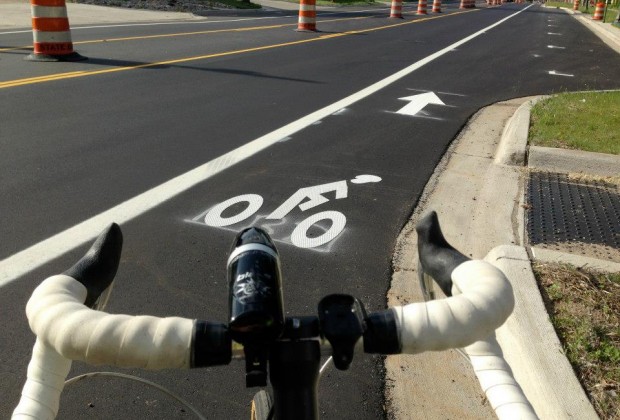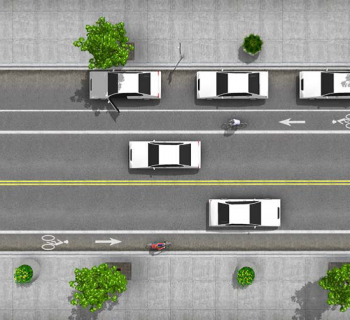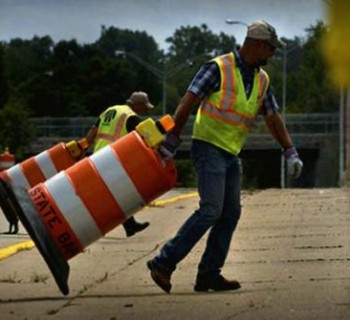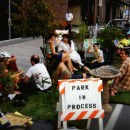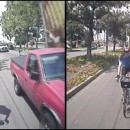In August of 2010, Michigan Department of Transportation Director Kirk Steudle issued a letter to all MDOT employees in the wake of the passage of Michigan’s Complete Streets Legislation, Public Act 135 of 2010.
In the letter, Steudle pointed out that the legislation passed in both houses by a wide margin. The legislation essentially required road agencies to coordinate and consider the needs of all legal users of roads, including vehicles, pedestrians, and cyclists, encouraged transportation planning as part of the municipal master planning process, and encouraged municipalities to adopt policies, plans and ordinances in support of Complete Streets.
Steudle’s letter exhorted MDOT employees to embrace the new approach, writing “I ask that you embrace it as an opportunity to improve how we work with our partners to deliver transportation services in Michigan. The transportation world is changing. We can face this change fearfully, or with confidence.”
Implementation of the law over the past three years has been less than hoped for, according to Mike Darga, senior project manager with Giffels Webster Engineering.
Darga and GWE engineer Scott Clein delivered a presentation in October at the Michigan Association of Planning’s annual conference, which called for a “complete reboot” to Michigan’s Complete Streets program.
Despite the passage of 69 local Complete Streets resolutions and 24 Complete Streets guidelines and ordinances, implementation of truly “complete” Michigan streets has been lackluster, according to Darga.
“A lot of communities have either done nothing or passed resolutions, thinking that was enough,” says Darga. “And many who did pass an ordinance also gave themselves a lot of opt-outs, including the state and federal road agencies. We all talk about that we want Complete Streets, but are we really putting it into hard action items? I’d like to see more ordinances with hard goals in them.”
Many ordinances that have been adopted have built-in “opt-outs” that allow agencies to circumvent the ordinance for smaller projects like resurfacing projects, where Complete Streets improvements may add incremental costs.
“A lot of the ordinances are of the sort where they say you don’t actually have to anything,” says Darga.
Darga says Michigan road agencies and municipalities need to make more of an organized commitment to Complete Streets, and agree on that that means. He thinks part of the problem is a lack of coordination in the municipal planning process.
“A lot of the planning efforts are disjointed on many fronts,” Darga says. “They are not really considering all users of all types; so either we get non-motorized plans but they don’t include transit users, or get transit plans but they don’t include bikes, or we get non-motorized plans that talk only about recreational trails and don’t talk about transportation.”
Darga emphasizes the need for local communities to establish plans and policies well in advance of future road projects.
“The Road Commission for Oakland County makes the case that communities need to get to them when a project is in the talking stage; if they wait until they are designing, it’s too late,” says Darga. “We’re talking in some cases many years in advance. That’s why getting ordinances and resolutions in place and sent to the County is critical, so they are aware of the communities want.”
Darga also argues that Public Act 85 of 2006, Michigan’s speed limit law, conflicts with the Complete Streets legislation.
“Public Act 85 has us setting speed limits purely as an engineering study, and not based on what individual communities value for their area,” says Darga. “For example, when the historic district at 13 Mile and Mound did a traffic study, the entire corridor got its speed limit raised.”
Darga also points out the need to sell the Complete Streets concept as an economic benefit as well as a health and environmental benefit.
“There’s no question that from an environmental and human health benefits perspective that walking and biking are good for us, and that’s fine, but you’ve got to sell it to a certain part of the population from a fiscal standpoint that these projects are good for economics, cost of transportation, bang for less buck, good for tourism, good for downtowns, and good for business,” says Darga.
Some communities are getting it right, according to Darga. Ann Arbor has adopted an ordinance and is in the process of developing a framework with specific Complete Streets criteria for each road type within the city. Southfield is trying to redefine itself through a new pedestrian-focused city center. And Detroit has a number of local community groups are pushing for detailed sub-area plans.
“We have no illusions that we are going to get rid of cars anytime soon,” says Darga. “We are just advocating for more choices for people.“


